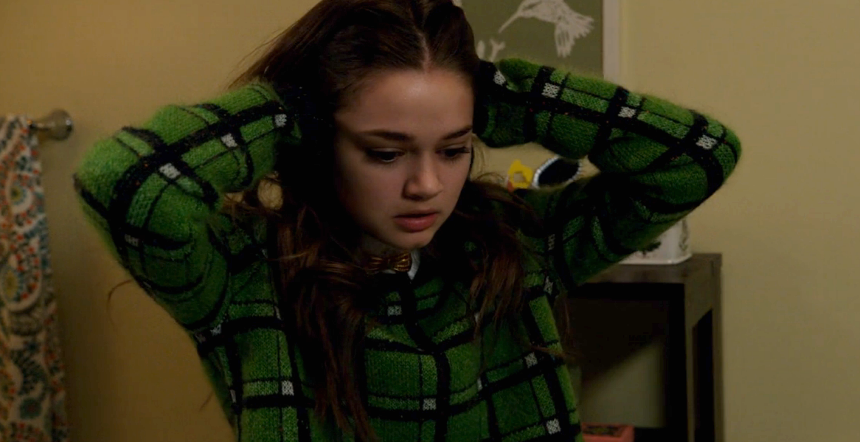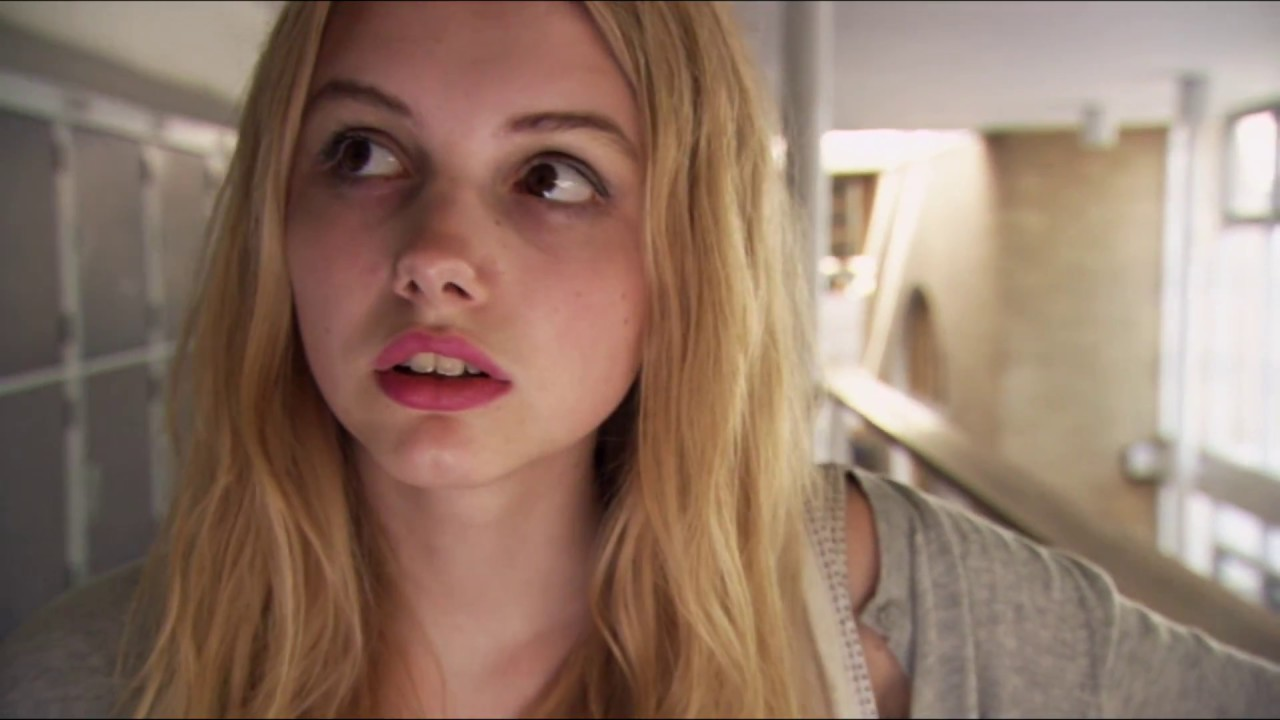NEDA Week 2020: A Survey of Eating Disorder Films and Shows
Since it is Eating Disorders Awareness Week, I wanted to give an overview of eating disorder films and critique them where they fall short. Since professionals or those who have experienced eating disorders are often involved in the production of these films, it is rare that one is completely inaccurate, but artistic liberties and the limits of the medium can often lead to problems with the representation of mental health through film. This list is by no means exhaustive; there are many films that I left out to avoid making this article ridiculously long, but these are the most recent popular films and shows that concern eating disorders.
Insatiable
Insatiable, a show about a girl who quickly loses sixty pounds and then starts competing in beauty pageants, amassed much controversy when it was first released due to its initial marketing that made it seem fatphobic to many viewers. But, its ultimate message is the opposite of fatphobic; Patty’s life falls apart after she loses weight. I have already given a more extensive perspective of this television show in an earlier article, but ultimately, this show gives a humanizing and understanding face to Binge Eating Disorder, the most common eating disorder that many people do not even know exists. Patty’s struggles with food are presented in a way that audiences can relate to, such as by comparing them closely with alcoholism. It is also made clear that even though Patty lost the weight, this didn’t improve her as a person or solve her underlying issues. The show makes it apparent multiple times that there is no quick fix for mental health problems.
Red Band Society
Red Band Society, a show about the antics of a group of teenagers in the hospital, was cancelled after its first season, but its representation of anorexia nervosa through one of the teenagers, Emma, feels realistic. The show has commentary about the romanticization of anorexia through a scene where Emma attends a prom and has two girls fawn over her for her underweight appearance, but the show itself can often fall into romanticization of the illness as well. The unintended message that this show could send to its adolescent audience is that if you develop anorexia, you’ll still have perfect grades and be more desirable to potential romantic partners while staying at a nice hospital. In reality, inpatient care is quite different, and often much more unpleasant, than what Emma experiences in the show. Someone whose eating disorder is severe enough for them to be in the hospital for as long as Emma is probably would not be able to engage in all of the activities she does, would be monitored more closely, and would physically be much sicker. While Red Band Society has a positive impact in presenting eating disorders as a legitimate disease, the show doesn’t truly confront the realities and underlying issues behind Emma’s illness.
Skins
Skins presents the lives and quandaries of a group of British teens, one of them being Cassie Ainsworth, a girl struggling with anorexia nervosa. The show does show some of the factors contributing to her illness, such as a neglectful father, depression, and low self-esteem, but often trivializes and romanticizes her eating disorder. Her eating disorder is clearly her way of portraying her depression and need for love on the outside, but is also often shown as something she does for a boy, or to be beautiful, shown be quotes such as, “I didn’t eat for three days so I could be lovely.” Eating disorders are already stereotyped and trivialized as something that privileged teenage girls engage in because they want to be pretty; we could do without Skins adding to that.
To the Bone
To the Bone follows Ellen, a woman with anorexia whose stepmother enrolls her in an unconventional treatment program as a last-ditch effort to effectively treat her eating disorder after years without success. The film certainly avoids romanticizing the appearance of a person with anorexia nervosa. Ellen is clearly emaciated, and her body is usually covered in layers of clothing because having a low body fat leads your body to struggle to keep you warm. The film is also more diverse than the typical eating disorder film, portraying a man with anorexia and an overweight black woman with bulimia. There’s a common stereotype that only white teenage girls experience eating disorders, and this film does break this stereotype through some of its characters. There is some romanticization of eating disorders through Ellen’s attitude at the beginning of the film, but the film mostly avoids romanticization through its portrayal of the horrible impacts that eating disorders can have on a person’s health and life.
Feed
Feed portrays the development of schizophrenia and anorexia nervosa in a teenage girl after her twin brother dies in a car accident. This film does a great job of portraying the anxiety fueling Liv’s eating disorder and the gravity of the eating disorder itself. The guilt of having to go on without her brother, her impersonal and absent father, and the pressure she feels to succeed push her to restrict her food intake and engage in compulsive exercise. Never is there a mention of her restricting to look a certain way or be able to do a certain thing. Her weight loss is not fueled by a goal; it is the product of the behaviors her anxiety and depression push her to engage in. She also becomes tired, sick, emaciated, and irritable through her illness. This portrayal is realistic and unromanticized.
Drag Me to Hell
Drag Me to Hell follows Christine, a young woman who is cursed by a witch after refusing to give her an extension on her mortgage. This film is much more subtle, and never explicitly mentions eating disorders, but is actually a representation of the protagonist’s struggle with bulimia nervosa. The witch is a representation of bulimia itself through her decayed teeth, loss of eyesight, aged skin, and thinning hair, which are all symptoms of bulimia. The witch also commonly vomits into Christine’s mouth. The witch, as bulimia nervosa personified, is a formidable enemy. The film does not romanticize eating disorders at all, and is overall a fun horror comedy.
Swallow
Swallow follows Hunter, a woman who develops pica. Pica is an eating disorder characterized by the consumption of non-food objects, which Hunter develops after marrying an overbearing man and becoming pregnant. I reviewed this film after viewing it at the Philadelphia Film Festival, and found it to be a deeply understanding and unromanticized representation of pica, an eating disorder that most people don’t know about. Hunter’s disorder is fueled by her need to feel a sense of control in a situation where she feels that she has no control over her life, and where the only thing she feels she can control is what she puts in her body. Rather than confront the problems in her life, namely her controlling husband and in-laws, she engages in self-destructive behaviors that give her short-term satisfaction. This film contains a deep understanding of the underlying issues that contribute to eating disorders.
Starving in Suburbia
Starving in Suburbia is commonly recognized as one of the worst eating disorder films. It is about a girl named Hannah who develops anorexia nervosa after seeing “thinspo” online and then recovers after a month. While I commend it for having a male character with anorexia, this is where the positives end. The intrusive thoughts of an eating disorder are represented through another person with anorexia, implying that those with eating disorders encourage others to starve themselves, which is stigmatizing and ridiculous. The film also romanticizes the illness by playing positive music and showing the protagonist happily losing a significant amount of weight in a short period of time. While she isn’t happy for long, the dramatization of her illness after it has progressed significantly (such as referring to it as a demon), creates this idea of teenage rebellion that makes eating disorders seem desirable to any teenagers who watch the film.
This is a short list of some of the representations of eating disorders in films and television with some critiques about where these films succeed and where they require improvement. One thing that you may have noticed is the lack of diversity here; while eating disorders are more common in marginalized groups, most media representations are about a white teenage upper class heterosexual cisgender girl with anorexia. While perceptions of these diseases are hopefully changing over time, it is good to keep in mind that eating disorders can affect anyone, regardless of the stereotypes perpetuated in the media. If you want to better understand eating disorders this NEDA week, I recommend that you avoid the mountain of problems in Starving in Suburbia or Skins and opt for Feed or Insatiable instead.







